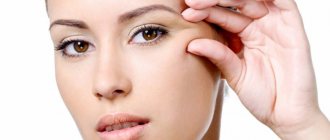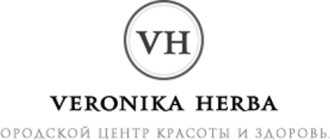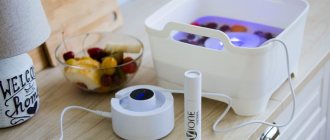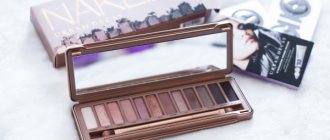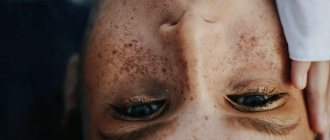What is newborn acne and what causes it?
Between two and five weeks of age, small pimples may appear on your baby's face (usually on the cheeks, nose, eyelids, chin and/or forehead). According to statistics, acne of newborns (or infant acne, neonatal pustulosis) occurs in 30% of babies. Experts do not agree on why acne occurs, but it may be due to one of the following reasons:
- inflammation of the skin caused by fungi of the genus Melassezia, which are part of the normal human microflora and colonize the skin in the first weeks after birth
- overactive sebaceous glands on the baby’s skin, caused by the specific action of maternal hormones (androgens)
Pimples on a newborn's face have nothing in common with acne in teenagers.
Dermatologist Anna #a_medclinic_Bolshakova talks about newborn acne. ⠀ The popular name “infant bloom”, “hormonal rash”, “newborn acne” or dermatologically transient neonatal pustular melanosis is a variant of the physiological norm. One of the reasons is considered to be fluctuations in hormonal levels, which affect the activity of the baby’s still imperfect sebaceous glands (due to an increased concentration of estrogen from the mother). ⠀ Usually, “newborn bloom” begins to appear in the second or third week of life, and passes without a trace by the 3rd month. ⠀ Small red elements (pustules) with whitish or white-yellow spots, similar to pustules, appear on the baby’s skin. The rashes may merge into groups.
They are absolutely sterile! That is, they have nothing to do with bacterial pustules.
The predominant localization of the rash is the face (cheeks, forehead, eyelids, chin); it can also be found on the neck, behind the ears, and upper torso, and in boys also on the genitals. ⠀ In contrast to allergic and pseudo-allergic appearances of newborn acne:
- do not bother the child (no itching, sleep or appetite disturbances)
- characterized by “white tips” in the center
- never peels off
- rashes do not merge into weeping lesions!
That is: if the rash spreads throughout the body, bothers the child, merges into weeping lesions or peels off - this is no longer neonatal acne. ⠀ “Hormonal rash” must be distinguished from prickly heat. ⠀ Since flowering of newborns is, in fact, a completely normal phenomenon, in most cases no specific therapy is necessary. By 2-2.5 months of the baby’s life, the rashes disappear on their own, and not even the slightest trace remains in their place. Treatment is required only for very severe types of hormonal rash. In such situations, the help of a dermatologist or endocrinologist is required.
You should never squeeze white spots on your baby's skin, as such actions can lead to infectious complications and cause scars. There is also no need to treat pustules with alcohol solutions and other antiseptics (potassium permanganate, furatsilin, etc.).
Proper care for the delicate skin of a newborn involves only ensuring its dryness and cleanliness. The use of fat-based ointments is also contraindicated for newborn acne, since they create an airtight film on the baby’s skin, which only worsens the situation. ⠀
How to get rid of acne in newborns
There are no home remedies to get rid of newborn pimples on the face. You need to wait until they disappear on their own. Typically, newborn acne goes away in about three to four months without leaving any traces. Here's how to take care of your baby's delicate skin if he has pimples:
- Wash him every day with warm water and mild baby soap, then pat dry.
- Try to avoid any rubbing of the affected areas of the skin, as this can make the process worse or even lead to infection.
- Do not apply lotions or oils to your baby's face.
- There is no need to follow a diet, since neonatal acne has nothing to do with the mother’s diet
Should neonatal rash be treated?
There is no need to treat a three-week rash in an infant. There are times when a baby damages pimples and introduces an infection into them. In this case, ointments are used that have an antiseptic effect. To prevent your baby from scratching the rash, you need to carefully trim your nails and wear special anti-scratch mittens.
READ ALSO: Stye on the eye while breastfeeding: how to treat
Treatment is prescribed only if the rash progresses very quickly or lasts more than 3 months. Sometimes there is a severe blockage of the duct. In this case, the doctor will prescribe special ointments (Bepanten, Ketoconazole).
It is necessary to monitor the hygiene of the baby’s skin, bathe him regularly, give him baths with medicinal herbs (decoction of chamomile, string, calendula). You can use a weak solution of manganese or Chlorophyllipt for bathing. For washing, use regular baby soap.
For skin problems, herbal baths are deservedly popular.
The baby needs to regularly take sun and air baths and go for walks more often. A nursing mother should follow a hypoallergenic diet. After the hormonal levels normalize, the rashes will disappear, and no trace will remain on the skin.
When to see a doctor
If you are concerned about your baby's complexion or if you are concerned that the condition is not improving after three to four months, consult your pediatrician. Your doctor may prescribe a special cream to treat acne in a newborn. Do not use over-the-counter creams or any other medications for acne without first consulting your pediatrician as they may harm your baby. Contact your pediatrician if your newborn has any of these symptoms:
- blisters on the skin
- peeling skin
- heat
- uncharacteristic tearfulness
- poor appetite
Causes
- Excess hormones from the mother that are still present in the baby
- Restructuring the child's hormonal system
- Excess secretion from the baby's sebaceous glands
- Blocked skin pores and follicles
- Excessive proliferation of lipophilic yeast leading to inflammation
- Hormonal imbalance (in teenagers)
- Gastrointestinal problems (in teenagers)
Neonatal and juvenile acne develop during periods of physiological natural hormonal changes. Infant acne is rare, mainly in boys; rashes become noticeable from the second half of life and continue to appear for 2-3 years, sometimes up to 5 years. In all forms, additional exogenous provoking factors can play a significant role.
Is sunbathing good for acne?
Illiterate dermatologists recommend prolonged exposure to direct sunlight. The manifestation of a pronounced side effect, the rapid spread of ulcers and acne throughout the patient’s body.
An increased dosage of ultraviolet radiation rapidly reduces the level of functioning of the immune system. There is a deterioration in health. Regular visits to the solarium - progressive age-related changes, risks of cancer.
Regular use of isotretinoin-based medications increases sensitivity to ultraviolet radiation. Local and general antibiotics tend to have a phototoxic effect.
Vascular abnormalities
Congenital anomalies of vascular structure are varied
- A simple nevus is a capillary anomaly. It appears as a pale pink spot or several small spots. The common name “stork bite” or “angel kiss” arose due to its location on the back of the neck and head, on the forehead, bridge of the nose and upper eyelids. The spots fade by the age of two, but can appear when crying or physical activity. No treatment required.
- Port wine stain or flaming nevus. A dark red spot that looks like a hemangioma. It may be one of the manifestations of pathological syndromes. Lasts for a long time. Treatment is not necessary, but can be done if the spot creates a cosmetic defect.
- Venous anomaly - blue-violet painful nodules under the skin. They can also masquerade as a hemangioma. Occur alone or in combination with other anomalies. The danger lies in the possibility of thrombosis of the altered veins. Treatment consists of wearing compression clothing and using aspirin to prevent blood clots. Surgical excision is possible.
- More rare lymphatic, arteriovenous and combined anomalies are found as part of various pathological syndromes.
Is treatment necessary for neonatal pustulosis in infants?
Pustulosis in newborns does not need to be treated. In this case, the rash does not threaten the baby’s health. Sometimes elements of the rash can become inflamed due to poor care of the child or non-compliance with hygiene rules by medical staff or parents. In this case, local treatment can be carried out.
For three weeks, until the rash goes away, you need to keep your baby in the following conditions:
- the room temperature should not exceed 25 degrees;
- humidity within 40-70% so that pustules do not spread throughout the body;
- maintain cleanliness in the room: carry out daily cleaning, change baby clothes in a timely manner, remove dust to eliminate the risk of recurrence of neonatal rashes;
- careful observance of the child’s personal hygiene: change diapers on time, carry out daily bathing, lightly swaddle and do not overheat;
- use hypoallergenic skin care products.
Marbled leather
During the first month of life, a baby's skin sometimes looks marbled. A uniform mesh pattern of white, purple, and reddish spots is the reaction of skin vessels to cold. Therefore, this phenomenon is most often noticed during swaddling. If the marbling is symmetrical and disappears when warmed, then there is no cause for concern. In other cases, it is worth discussing this symptom with your pediatrician so as not to miss the early diagnosis of diseases of the heart, lungs or skin itself.
Peeling
On the second or third day after birth, the newborn’s skin begins to peel off. Peeling is observed in everyone, but to varying degrees of severity. Most severe if the baby is post-term. The reason is the same restructuring of the body to exist in the air. The skin loses moisture, and the top layer gradually peels off. Physiological peeling does not require treatment and goes away on its own within a few days.
If the peeling is profuse and leads to deep cracks, the skin is lubricated with special moisturizers - emollients. In case of pronounced peeling, it is necessary to exclude congenital skin diseases such as ichthyosis, hyperkeratosis and others.
Diaper rash
A more serious skin reaction to overheating is diaper rash. Occurs in natural folds. It looks like redness, sometimes with weeping and erosion. With a long process, a bacterial or fungal infection may develop, then the surface of the affected skin is moist, bright red, with clear or purulent discharge. Prevention measures are the same as for prickly heat.
The skin in the folds is treated with powders. If normalizing the microclimate and caring for the newborn does not lead to a reduction in diaper rash, you should see a doctor. If complications occur, antibiotic therapy or topical steroid ointments may be needed.
Complex therapy
A mild form of the disease is complex external therapy. Treatment is as prescribed by the treating doctor based on the diagnostic results. Methods:
- mechanical;
- chemical peeling.
Peeling is based on salicylic and pyruvic acid extract. Mechanical cleaning is the middle stage of treating the disease. An initial cleaning step is often necessary. It is planned to complete the chemical peeling with mechanical peeling. Additionally, complex use of general and local medications, antibiotics.
Treatment of moderate disease is an addition to the external type of systemic therapy. Peculiarities:
- comprehensive laboratory tests: clinical blood test, biochemical diagnostics, general urine analysis;
- in-depth study of the patient’s hormonal background.
Prescription of local and general antibiotics, use of oral contraceptives with a pronounced antiandrogenic effect.
Reference: androgens for effective treatment of women. Purpose - based on the results of a complete examination of the patient’s hormonal imbalances. Many oral hormonal medications have a pronounced effect: “Zhanin”, “Yarina”.
The complex course of the disease is characterized by taking medications based on isotretinoin. Medicines for advanced stages of chronic disease. Contraindicated in women prone to pregnancy - after prescribing contraceptive medications or procedures. Severe side effects:
- severe severe headaches;
- increased feeling of dryness;
- increased anxiety;
- periodic outbreaks of dizziness.
The use of isotretinoin-based medications is accompanied by careful monitoring by a dermatologist. Treatment of post-acne is complex and time-consuming compared to common acne. If there are primary signs of an inflammatory process, immediately contact an experienced dermatologist at the medical center.
The psychosomatic state of the patient in the presence of a chronic disease is a separate side effect. Pronounced feeling of stiffness, constriction. The resulting facial defects force people to lead a hidden lifestyle. Side effects:
- the rapid increase in numerous complexes;
- expressed feelings of resentment;
- significant deterioration in mood.
The doctor establishes close, trusting cooperation with patients. Parallel work is carried out with a professional psychologist. The drug and the correction method for treating the chronic course of the pathology are specified. Getting the first visible results.
Diaper dermatitis
The distinctive feature of this rash is that it appears only in the area under the diaper, other areas of the body remain clean. The reason is increased humidity and irritating feces.
The rash is found in the buttocks, thighs, lower abdomen in the form of individual elements or continuous areas of changed skin. The elements of the rash are varied: red spots, bumps, pustules or peeling.
To alleviate the condition, you need to change the diaper and wash the baby immediately after bowel movement. While changing clothes, you can arrange air baths, that is, leave the child to lie naked, you can cover it with a regular dry diaper. Lubricate the skin with a special diaper cream.
Change the diaper every 3 hours, even if it is only slightly full. More often when very full. If these measures are ineffective, you should consult a doctor. Local glucocorticoid agents may be needed.
Symptoms of pustulosis and how to distinguish it from other diseases
A typical symptom for pustulosis of the neonatal infantile period is acne or comedones, which have a characteristic localization. They are located in the chin and cheeks.
As a rule, during rashes the baby behaves calmly: does not cry, eats normally, sleeps well and gains weight.
The pustules are slightly raised above the skin, hyperemic, and have a white or black dot in the center. The rash appears unevenly and is not accompanied by an increase in temperature.
Pustulosis in neonatal development is often confused with other diseases: toxic erythema of newborns, miliaria, allergies. For an accurate diagnosis, it is necessary to carry out differential diagnosis.
Need advice from an experienced doctor?
Get a doctor's consultation online. Ask your question right now.
Ask a free question
Toxic erythroderma manifests itself at two to three days of age during neonatal development. It may be preceded by a diffuse form of the disease. It manifests itself as hyperemic spots on the chest and abdomen, and to a lesser extent on the face and limbs. Traces are single or multiple. Papules may appear in the background. After a few days, the rash goes away on its own. The etiology of pustules is unclear.
Miliaria manifests itself as red and pink vesicles and papules. Their appearance is associated with blockage of the excretory ducts of the sweat glands when in warm and humid conditions. They go away after eliminating the provoking factors.
Pustulosis of the neonatal period is indicated by the localization, nature of the rash, the absence of subjective symptoms and laboratory indicators indicating allergies or inflammation.
In the case of toxic erythroderma, there are changes in blood tests. Miliaria appears in places where sweat accumulates.
Manifestations of pustules and an allergic reaction in the neonatal period will be accompanied by severe hyperemia, itching and burning. This will be reflected in the child's behavior. The baby will be restless, cry, scream, have trouble breastfeeding, or refuse to eat. Your blood test will show changes indicating an allergy.




